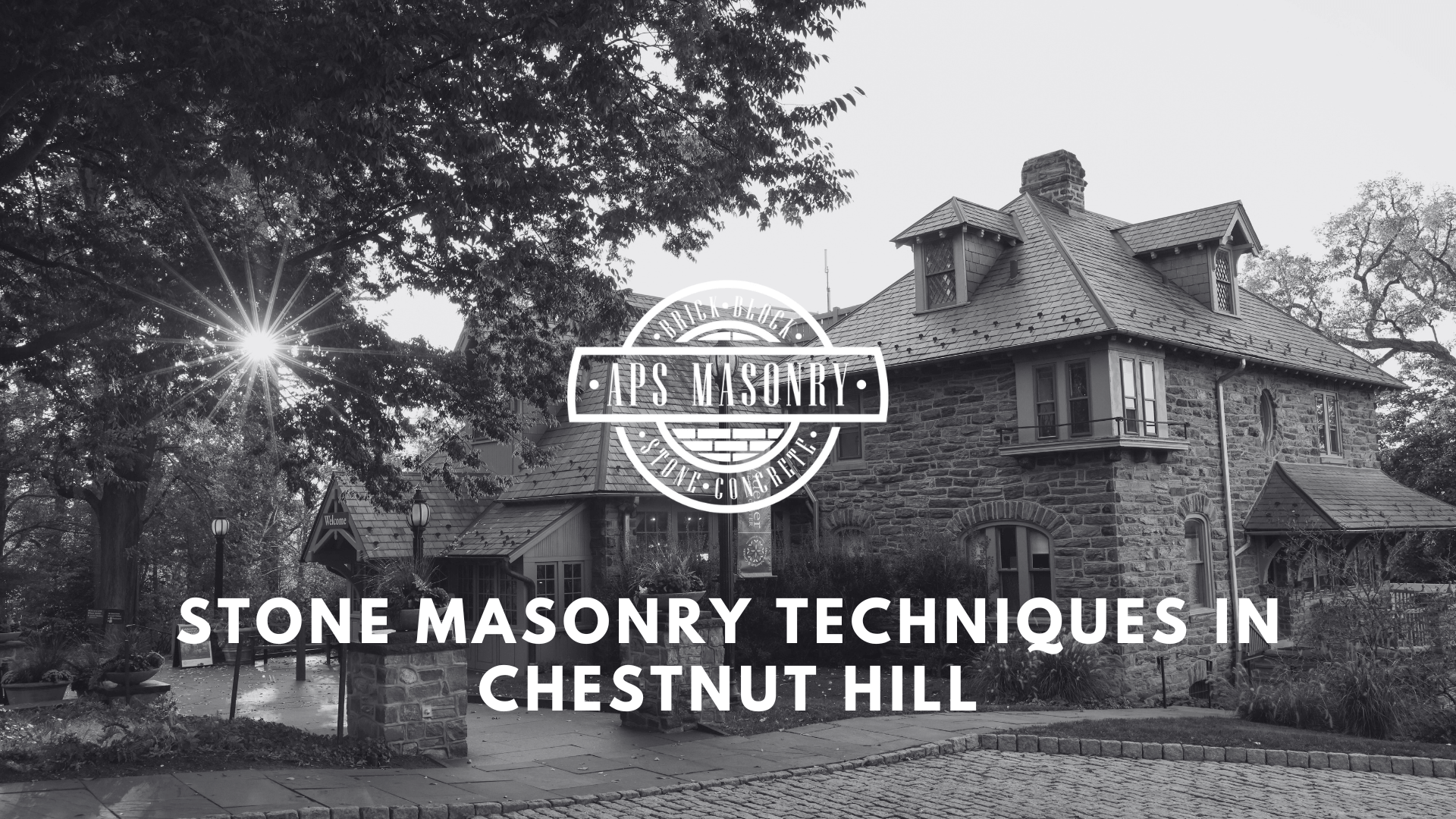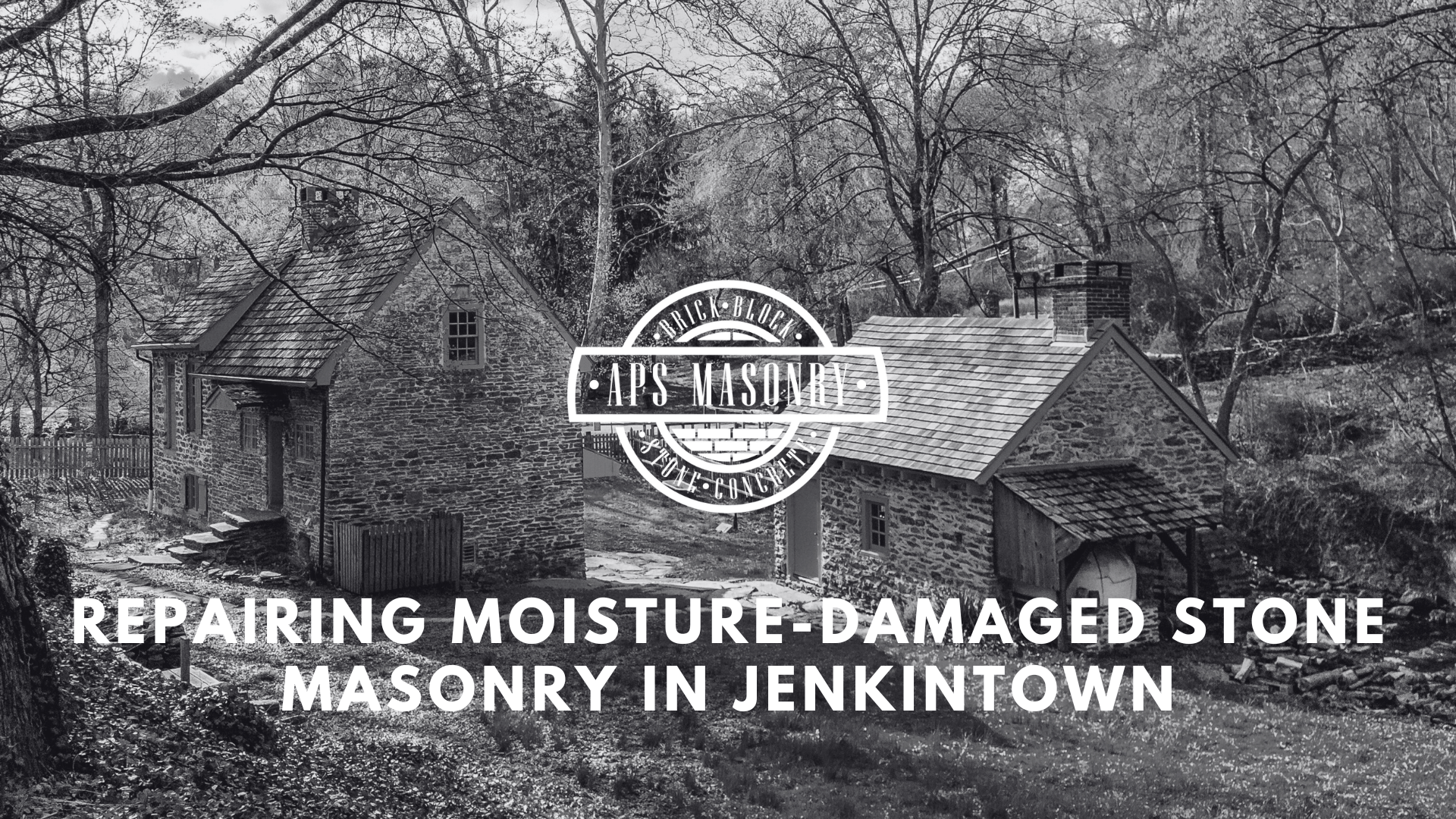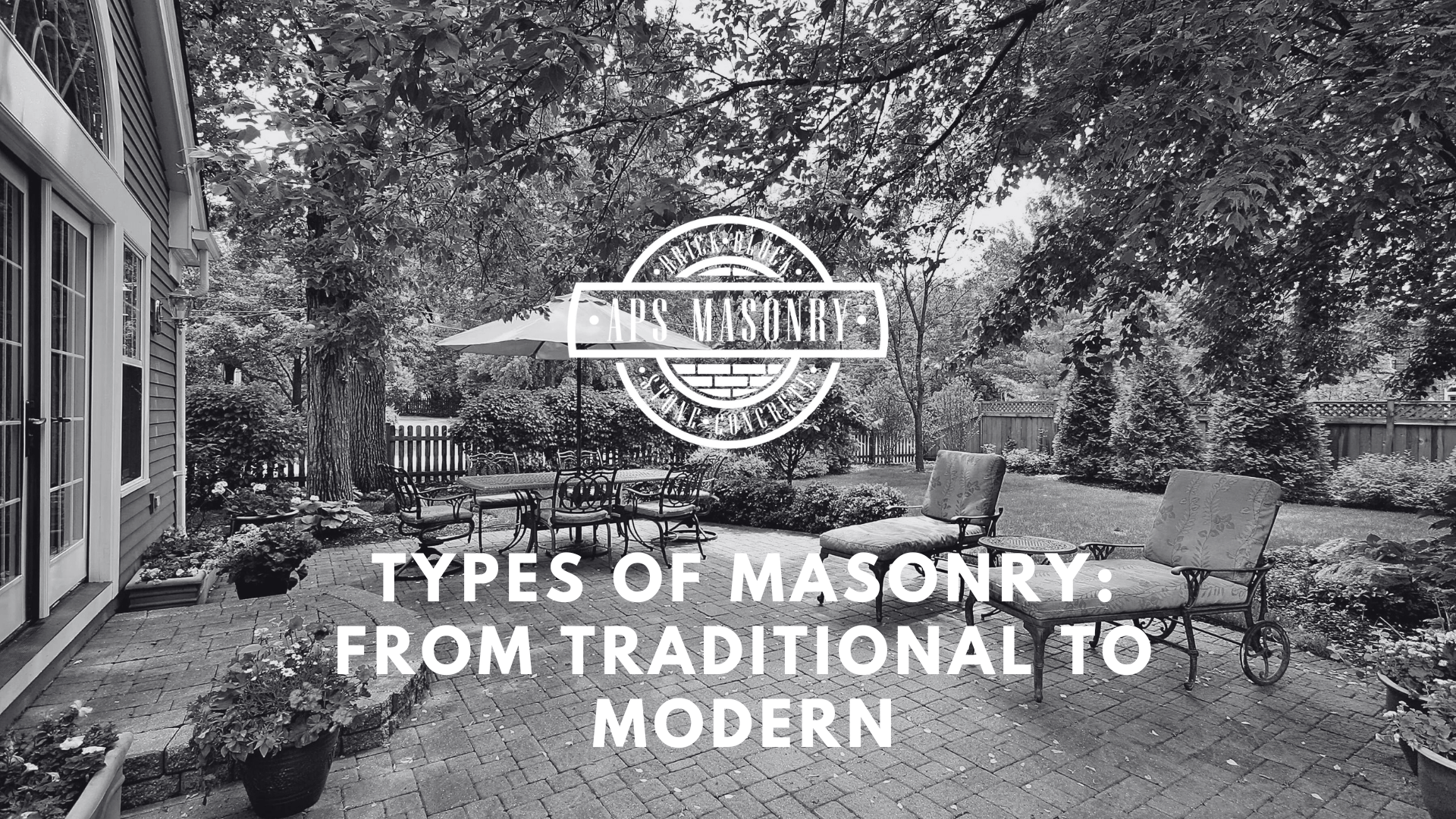Repairing Moisture-Damaged Stone Masonry in Jenkintown
Repairing moisture damaged stone masonry in Jenkintown takes more than patchwork.

Stone masonry techniques in Chestnut Hill built to last. APS delivers quality craftsmanship, masonry repair, and full restoration for historic homes.
Chestnut Hill carries a language written in stone. Walk its shaded blocks and you’ll see masonry work that defines both character and structure. Schist walls, brick patios, and historic chimneys aren’t decorative touches, they are the framework of homes built to outlast generations. These properties require more than surface-level fixes. They demand stone masonry techniques in Chestnut Hill that respect original craftsmanship and apply it with precision. The right approach protects not only the visual integrity of your house, but its safety, drainage, and long-term value.
APS Masonry Contracting brings professional masonry services with decades of local experience. Our masonry contractors work closely with homeowners to plan each masonry project based on property age, material condition, and intended use. From residential masonry to commercial masonry services, our team of skilled masons handles everything from chimney repair and masonry restoration to retaining wall construction and detailed brickwork. Using only the finest materials and traditional methods refined over time, we deliver masonry repair and construction that supports structural integrity and maintains historic charm.
If you’re planning your next masonry project, our experienced masons in Chestnut Hill are ready to provide lasting solutions built on knowledge and meticulous attention to detail.
A clean strike on a mortar joint changes the life of a wall. When properly tooled, it sheds water instead of absorbing it. The depth, shape, and finish of that joint all determine whether moisture sits on the face of the stone or moves away from it. This is not aesthetic preference. It’s a technique. And it’s one most people overlook until their wall starts crumbling.
In Chestnut Hill, much of the original masonry used Wissahickon schist laid in irregular courses. Each stone is different. No module. No predictable pattern. Matching that kind of bond takes eye training, not a tape measure. Our skilled masons use chisels and hammers—not saws—to face and shape the stone so it looks like it’s always belonged there. That’s not old-fashioned. That’s just right.
The difference between a repoint and a smear job is about five minutes of patience and fifty years of experience. Tuckpointing means cutting out the failed mortar cleanly and to the correct depth. It means mixing a compatible blend, applying it in lifts, and finishing it without staining the face of the stone. We’ve seen repairs where joints were overfilled, slathered across the surface, or sealed tight with cement mixes that trapped moisture behind the wall. The result isn’t just unattractive. It’s a shortcut that leads to long-term damage.
Real masonry work requires tools that match the technique. Brushes for dust removal. Trowels shaped for tight access. Jointer tools matched to the original profiles. On a recent job involving a retaining wall behind a prewar stone house, we restored over forty feet of wall using a narrow grapevine joint to match the original detail. That decision didn’t come from a catalog. It came from experience, careful inspection, and understanding how water, weight, and weather affect the entire structure.
When homeowners attempt masonry repairs without proper technique, they often rely on hardware store mortars and over-applied sealants. These materials may seem strong, but they don't flex with the building, they don't breathe, and they don’t age well. One stone out of alignment throws off the load path. One wrong mortar mix can fracture stone over a season. Quality craftsmanship isn’t just visible in the finish. It's built into the choices made before the first tool hits the wall.
Every masonry project in Chestnut Hill begins with the same step: evaluation. The type of stone, the height of the wall, the exposure to water, tree roots, or foot traffic, all of it matters. You can’t start a job without understanding how the materials will perform once the work is completed. That’s why experience matters more than appearance.
A wall along a property line might face runoff from higher ground. A set of front steps may shift over time due to frost heave or poor subgrade compaction. A chimney can leak where flashing has failed or mortar joints have opened at the crown. These are not unusual problems. They’re typical in homes built before modern drainage systems or code-based foundations. The solution isn’t just to rebuild. It’s to rebuild with intent.
We look at what exists, then decide how to go forward. That means checking bond patterns, examining failed joints, and selecting the right mortar. Not every wall takes the same mix. A stucco finish over stone reacts differently to moisture than bare masonry. Outdoor living spaces that sit near tree lines need different footing than garden walls. Commercial masonry often includes time constraints, but the expectation of longevity still applies. These projects are judged by function and outcome.
Chestnut Hill homes often involve structures registered or eligible for the national register. That status doesn't demand perfection, but it does demand care. Improper repairs lower property value and introduce long-term risk. Matching materials takes more time, but it protects the wall from becoming a patchwork. Most failures in masonry occur because someone used what was convenient, not what was correct.
We handle various masonry types across different applications. That includes brick, fieldstone, stucco overlays, and composite construction. Each has its own requirements. Mortar joints vary depending on exposure, support, and expansion. Movement needs to be accounted for. Weight needs to be distributed without compromise. It’s not just stone and mortar. It’s performance over time.
Our team delivers this level of attention every time. We don’t sell upgrades. We build what the wall needs. Quality comes from planning, not products. Our work is built to support the structure and the life inside it. The techniques don’t change, but the application always does.
This approach results in completed work that requires no explanation. Clients see clean joints, dry basements, true lines, and solid treads. These details are not decorative. They protect the property. Happy clients come back for new phases because the last job held up. That’s customer satisfaction, not just a finished surface.
We apply a comprehensive range of techniques, tools, and materials suited to the property’s unique needs. That includes patios with structural stone beds, chimneys rebuilt with proper cap flashing, and stucco repairs that blend, not blot. Every decision is based on what lasts.
Some projects ask for more than a clean repair. They require judgment, care, and the willingness to slow down. That’s the difference between patching and preserving. It’s also the difference between short-term correction and lasting value.
Historic places like Chestnut Hill require a mindset that treats each house as a singular structure. The brick patio behind a 1920s twin will never match the exact rhythm of one built today. A stone retaining wall at the edge of a prewar home leans slightly because it was dry-laid without reinforcement. Knowing what to keep, what to rebuild, and what to leave alone—that comes with extensive experience, not good intentions.
We approach every job with a customized plan. The materials are reviewed before the first tool is picked up. The joint profile is matched before the wall is opened. The stone is shaped by hand. That’s not overkill. That’s the standard. When the project involves preservation efforts, nothing should feel rushed. Real masonry restoration doesn’t call attention to itself. It fits, functions, and disappears into the whole.
Clients don’t come to us for surface-level service. They expect a team that sees the entire project through the same lens—from the initial consultation to the last sweep of the broom. Professional masonry services should carry weight behind the word “professional.” That means delivering exceptional results without excuses.
We build with only the best materials. That includes lime-based mortars, reclaimed stone, stainless steel pins, and control systems that adapt to the structure, not force it into something it’s not. That’s what we mean by expertise. Knowing what not to touch is just as important as knowing how to rebuild.
Repairing a wall is one part of the job. Planning the wall, protecting the stonework, managing the site, and respecting the work that came before—those are the things that uphold the highest standards. That’s what leads to complete satisfaction. The homeowner steps back, sees nothing out of place, and knows the job was done right.
You don’t get another chance to do foundational work twice. A bad repair will always need to be corrected. A well-done one holds its place for decades.
If your home is one of those that deserves more, we’re ready to help. We offer proper stonework, full masonry restoration, and detailed planning backed by real experience. Contact us today to schedule your initial consultation.

Repairing moisture damaged stone masonry in Jenkintown takes more than patchwork.

Preserving the stonework of Chestnut Hill homes takes more than good materials—it takes skilled masons who know the history behind every joint.

Let's explore the evolution of masonry from traditional to modern methods, catering to diverse construction needs. It covers how old techniques...